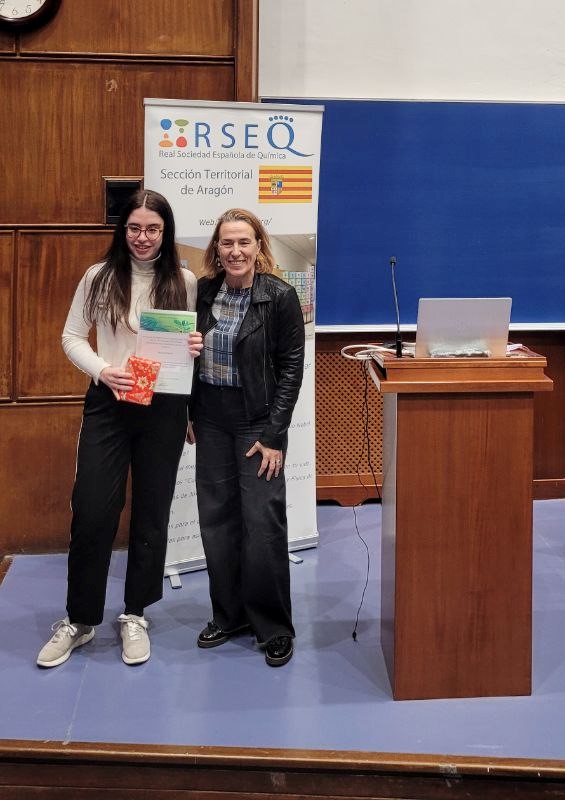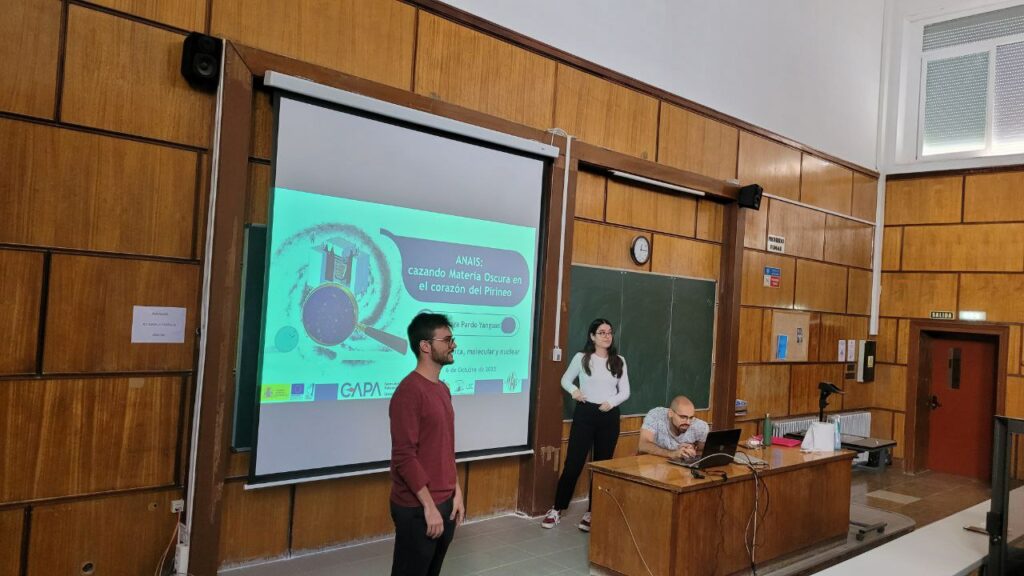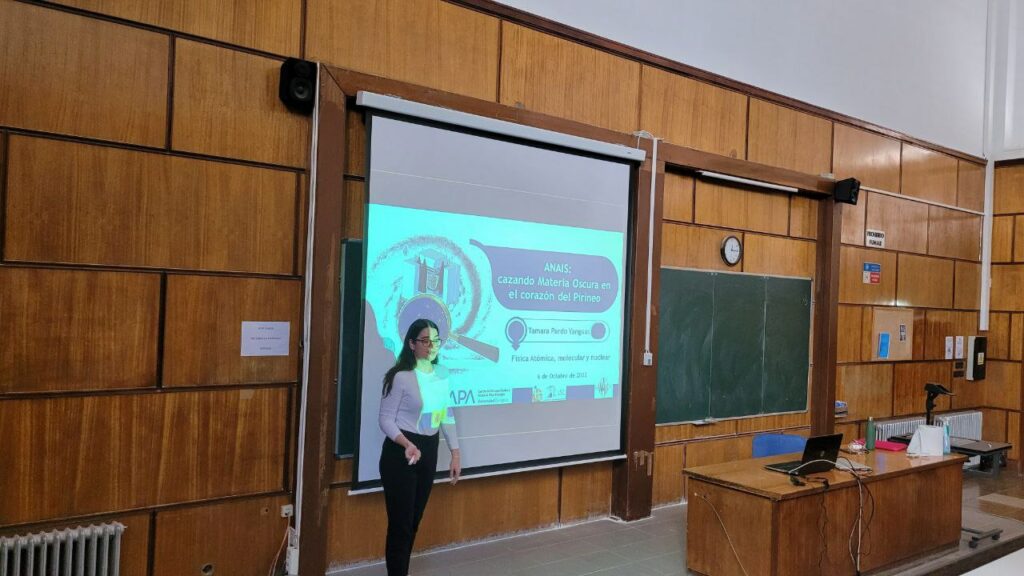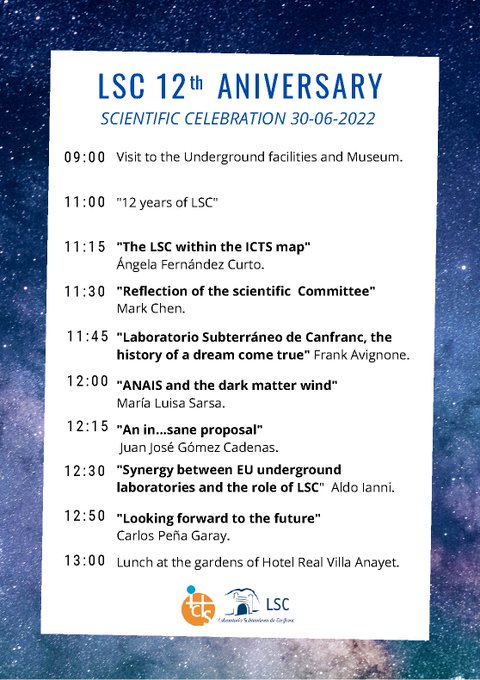El próximo jueves 25 de enero de 2024 a las 19 h se estrena en Cines Grancasa el documental «Cazando lo Invisible» de Mirella R. Abrisqueta, en el que han participado investigadores del Centro de Astropartículas y Física de Altas Energías (CAPA) de la Universidad de Zaragoza. Solo conocemos de qué está hecho el 5% del Universo. El resto es materia oscura y energía oscura, que son totalmente desconocidas, pero fundamentales para nuestra existencia. «Cazando lo invisible» viaja por algunos de los centros internacionales más importantes que investigan estas misteriosas partículas, dos de ellos ubicados en Aragón, para conocer sus avances.

El estreno está organizado por Sintregua Comunicación, el Planetario de Huesca y CAPA. El desarrollo del acto será el siguiente:
19:00 h presentación
Dª Mirella R. Abrisqueta, directora del documental.
Dr. Carlos Pobes, científico titular del CSIC en el INMA.
Dra. Mª Luisa Sarsa, IP y portavoz del experimento ANAIS.
Dr. Javier Cenarro Lagunas, director del Centro de Estudios de Física del Cosmos de Aragón (CEFCA).
Dr. Igor García Irastorza, director del Centro de Astropartículas y Física de Altas Energías (CAPA).
19:45 h proyección del documental
20:35 h coloquio en el que podrá participar el público asistente.
La entrada es gratuita hasta completar aforo, pero es imprescindible confirmar asistencia y descargar las entradas a través del siguiente enlace:










